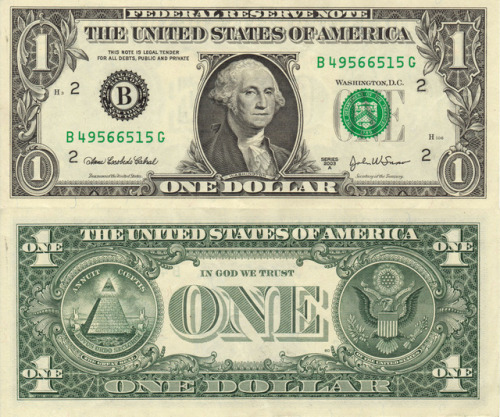peashooter85:The Origin of the Dollar and Pocket ChangeAmong the most popular currencies in the worl
peashooter85:The Origin of the Dollar and Pocket ChangeAmong the most popular currencies in the world, the dollar is not only used by the United States, but by 20 other countries including Canada, Australia, Taiwan, Hong Kong, Singapore, New Zealand, Liberia, Jamaica and Namibia. In addition the US dollar is the official currency of East Timor, Ecuador, El Salvador, Federated States of Micronesia, Marshall Islands, Palau, the Caribbean Netherlands. The origins of the dollar can be found in the Bohemian town of Jachymov in the Kingdom of Bohemia, now the Czech Republic. There in the early 16th century of Bohemian noble named Count Hieronymus Schlick operated a very successful silver mine. In 1518 he began minting his own silver coins at a specific weight which he felt would be easier for merchants to use for trade. Called the “Joachimsthaler” (named after St. Joachim) it was a coin with the silver weight of 27.2 grams. The new “thaler” quickly became popular in Europe, being used in the Holy Roman Empire, Spain, Holland, and Scandinavia. Each country minted their own thalers with different weights, but all kept pretty close to around 26 or 27 grams of silver. Remember that back then money was valued by pressure metals, not fiat (government decree), thus money was just as much of a unit of weight as it was a unit of value. This explains the origin of common lesser coins based on the dollar. A half dollar weighs one half of a dollar. A quarter weighs ¼th of a dollar. The word “dime” comes from the French word “dîme“, meaning a tithe, or tenth. Thus a dime weighs one tenth of a dollar.The thaler continued to be commonly used in the 18th century. In colonial America, Spanish Thaler’s became a popular currency among colonists, being used beside British Pounds. After the United States became independent from Britain, the pound was dropped and the thaler became the new currency of the US, although being called by it’s Anglican name, the “dollar” . By the 19th century the use of paper money became common, although the dollar was still a measurement of weight and silver dollars, quarters, and dimes were minted. However paper dollars were not cash in and of themselves, but were certificates which represented silver money, used because carrying paper money was easier than carrying silver coins. Each bill had printed on it “one silver dollar payable to the bearer on demand”. This meant that a person who had a dollar bill could exchange their paper for silver at any bank on demand. Today, silver certificates are highly collectible items.By the 20th century most nations ended the use of gold and silver currency. The US ended the gold/silver standard in 1933 under Franklin D. Roosevelt. Thus, the dollar was severed from it’s link to silver weights, and dollar bills became simple pieces of paper that were worth something simply because the US Government says it is worth something. Half dollars, dimes, and quarters continued to be minted in until 1965, when silver became more valuable then the coins its was used to mint. Thus the US mint began producing pocket change out of copper-nickle alloys and made it legal to melt earlier silver coinage. Australia did the same in 1965, Canada in 1969. The silver half dollars, dimes, and quarters are called “junk silver”, so named because they are not rare enough to have collectors value, but are still valuable because they are made of silver. A pre-1965 silver quarter can be worth around $5 in today’s silver market. Thus many collect junk silver as a means of investment. I myself invest some of my money in precious metals, and I buy a little bit of junk silver now and then. Plus, I also like to have a bag of silver coins for when I dress up and pretend to be a pirate in my free time, so that I can jingle it while shouting AARRRGGHHH!!!! -- source link
Tumblr Blog : peashooter85.tumblr.com


